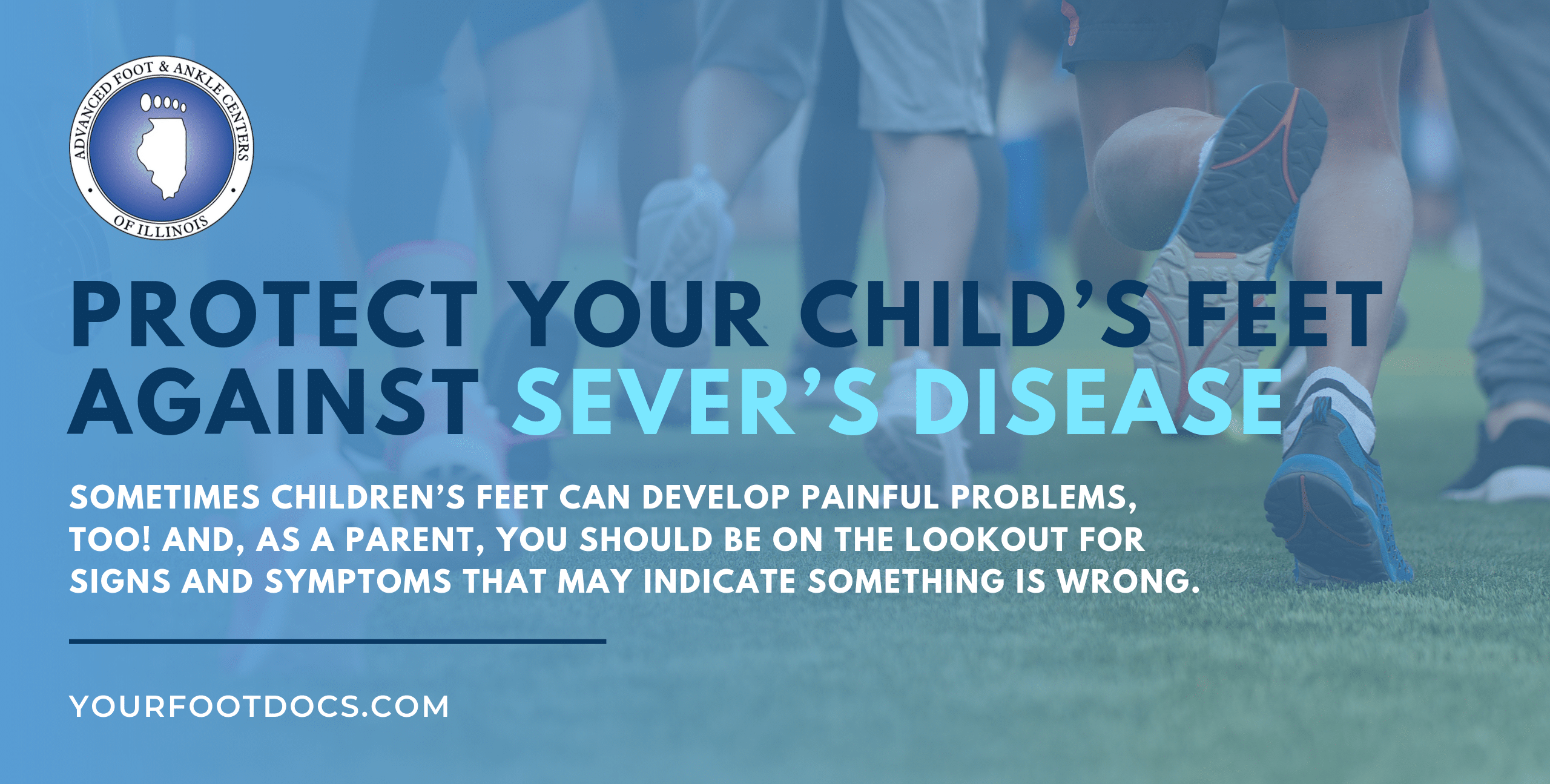Protect Your Child’s Feet Against Sever’s Disease
Kids sometimes seem to move a mile per minute. Barely after learning to walk, they’re out running with friends, exploring their neighborhoods, and playing sports. And while cuts, scrapes, and bruises are just part of the package, kids are often pretty resilient against injury and chronic pain.
But not always.
In fact, heel pain is a common complaint for children – especially those who love to be physically active and are in their early teen years.
When kids experience heel pain, the underlying cause is usually very different from heel pain conditions experienced by adults. While mom and dad tend to develop soft tissue injuries like plantar fasciitis or Achilles tendinitis after a long period of wear and tear, kids are more likely to develop a condition known as Sever’s disease.
But What is Sever’s Disease?
First off, let’s get one thing straight:
Despite its name, this condition is not actually a disease, but rather an unfortunate injury.
During childhood, bones grow rather quickly. And in order to achieve this growth, many long bones (as well as the heel bone) have exposed growth plates at their ends. These growth plates are much softer than the surrounding bone and significantly less resistant to damage, injury, and inflammation.
Now, the growth plate of the heel bone is especially vulnerable due to its location. The heel, of course, absorbs a tremendous amount of force when kids run, jump, and play (on average, totaling up to several tons in a day!). These growth plates can also be “tugged” by tight Achilles tendons or calf muscles that haven’t grown as quickly as the bones to which they attach.
Ultimately, all these stresses may cause injuries and result in heel pain – most frequently located along the back of the heel.
Sever’s disease is especially common during adolescent growth spurts, which typically occur as early as 8 years old for girls and 10 years old for boys. As the bones mature, the growth plate of the heel bone becomes closed off and can no longer be easily damaged.
Aside from pain, other signs that may indicate your child is suffering from Sever’s disease include:
- Toe walking
- Limping
- Difficulty participating in physical activities
- Lack of interest in participating in favorite activities
A good way to determine if Sever’s disease is likely in play is by squeezing the sides of the heel. If this causes a sharp spike in pain, then it’s likely that your child has developed this condition – and you should come visit our office right away for proper treatment.
How Can You Get Rid of This Problem?
So the bad news is there’s no “instant” cure for Sever’s disease. Most likely, it will take a few weeks or so for your child to fully recover and return to their favorite physical activities.
The good news, however, is that the condition is highly treatable, only temporary, and almost never requires any kind of surgery or aggressive treatment. Your child will outgrow this problem eventually when the tendon catches up.
But in the meantime, rest is the best treatment – not exactly an easy thing for an active child, we know! And luckily, there are some low-impact exercise options, like swimming and cycling, that aren’t as stressful on the heels.
You should also bring your child to our office for a better evaluation. Though we may only recommend some simple treatment measures that you can easily use at home, it’s important we determine that Sever’s disease is, in fact, what is causing their discomfort instead of a different condition that may require more advanced treatment. (Better to be safe, than sorry, right?)
Our goal is to help your child reduce their pain and inflammation as quickly and as simply as possible. Common treatment approaches may include the following:
- RICE therapy. Your child will need to take a few days to a few weeks of Rest from sports or highly energetic play. Using Ice packs, Compression socks, and keeping feet Elevated above heart level will also help with pain and swelling.
- Often, over-the-counter medications can help manage the temporary pain, although it’s important to make sure your child can take them safely and has the correct dosage.
- Stretching exercises for the feet, Achilles tendon, and calves often help reduce strain on the growth plate.
- Custom orthotics. These versatile medical devices can help cushion the heels and support the arches during daily activities.
- If pain is severe and isn’t going away with rest and stretching, the foot may need to be immobilized and protected with a cast for a short period of time. This gives the foot a chance to heal.
Protect Your Child’s Feet Now (and Ensure Them a Better Future)
Of course, the only way to find out for sure if your child’s heel pain is caused by Sever’s disease is by coming to our office for a diagnosis. Only then we will be able to determine which treatment option is best to get them back on their feet and doing the things they love most – without pain.
At the Advanced Foot & Ankle Centers of Illinois, our team of experts is dedicated to providing high quality, compassionate care to all members of your family, including children. So if heel pain is getting in the way of your child’s activities, please give us a call – we have seven convenient office locations waiting to serve you.
Prefer to reach electronically? No problem! Just fill out our online contact form and a member of our staff will contact you shortly.

